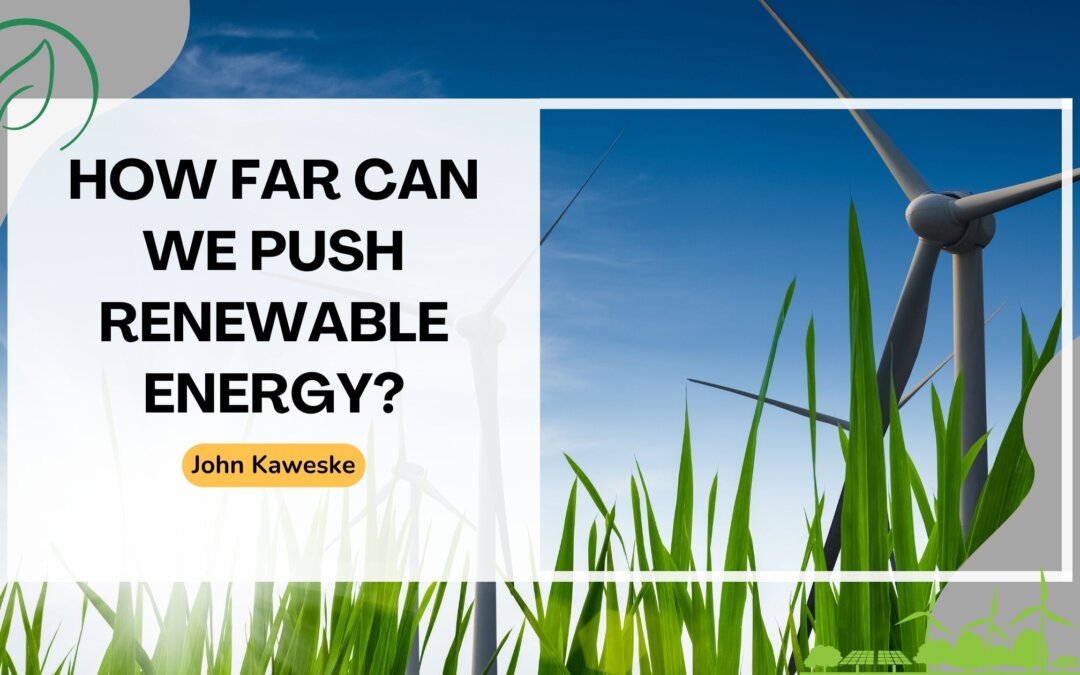The potential of renewable energy is vast and continues to expand as technology advances and the world increasingly embraces sustainable practices. Renewable energy sources, such as solar, wind, hydro, geothermal, and biomass, offer numerous advantages over fossil fuels, including environmental benefits, energy security, and economic growth. Let’s explore how far we can push renewable energy and the factors that influence its widespread adoption:
Advancements in Technology:
Technological advancements have significantly improved the efficiency and cost-effectiveness of renewable energy technologies. Breakthroughs in solar photovoltaic cells, wind turbine designs, energy storage solutions, and grid integration have opened up new possibilities for harnessing renewable energy on a large scale.
Increasing Investments:
As awareness of climate change and environmental concerns grows, there is a global shift towards investing in renewable energy projects. Governments, businesses, and individuals are increasingly allocating resources to support the development and expansion of renewable energy infrastructure.
Grid Modernization and Flexibility:
Modernizing power grids to accommodate renewable energy sources is crucial for maximizing their potential. Flexible grid management, smart grid technologies, and demand response systems enable better integration of variable renewable energy and help balance electricity supply and demand.
Government Policies and Incentives:
Supportive government policies and financial incentives, such as feed-in tariffs, tax credits, and renewable energy targets, encourage investment in renewable energy projects.
Decentralized Energy Systems:
Decentralized energy systems, such as microgrids and community solar projects, empower local communities to generate and manage their renewable energy. These systems enhance energy resilience, reduce transmission losses, and promote energy democratization.
Electrification of Transportation:
The electrification of transportation, notably the transition to electric vehicles (EVs), creates additional opportunities for renewable energy. EVs can serve as energy storage devices, absorbing excess electricity during peak generation times and releasing it back to the grid when needed.
Renewable Hydrogen:
Renewable hydrogen, produced through electrolysis powered by renewable energy sources, holds promise as a versatile energy carrier. It can be used in fuel cells for electricity generation, as a clean fuel for transportation, and in various industrial applications.
Offshore Wind and Ocean Energy:
Exploring offshore wind farms and ocean energy technologies, such as tidal and wave energy, taps into vast renewable resources not limited by land availability. These technologies can generate significant amounts of clean energy, particularly in coastal regions.
Global Collaboration and Partnerships:
Addressing the challenges of climate change and transitioning to renewable energy requires global collaboration and partnerships. International cooperation and knowledge sharing facilitate the development and deployment of renewable energy solutions on a larger scale.
We can push renewable energy further by leveraging technology, investing in infrastructure, promoting supportive policies, enhancing grid flexibility, and embracing decentralized and innovative energy solutions. With continued efforts and commitment from governments, businesses, and individuals, renewable energy can play a transformative role in mitigating climate change, reducing pollution, and securing a sustainable future for future generations.

